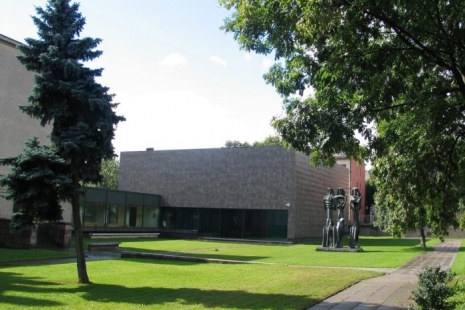Room I
This exhibit presents earliest examples: treasures of coins and jewellery; tiles and plates excavated in Kaunas; the oldest known Lithuanian sculpture – “The Žygaičiai Lion”; rare books including the privilege of land and population granted to the Bishop of Samogitia and the Capitula by Vytautas the Great; the painting “Memento Mori” which is complemented by the extremely rare sculpture “Time allegory” used in monasteries.
Lithuania’s cultural heritage suffered over the centuries due to political and historical events hence the importance of these remaining items.
Room II
This exhibit presents examples of ecclesiatical art: Gothic Madonnas. Gothic sculpture appeared in Lithuania after 1387, date of the state’s official Christianization and was initially executed by sculptors from the Czech Republic, Poland, Livonia, Prussia, and Germany. Inspired by the work of foreign artists, local sculptors also began to produce works.
Room III
This exhibit provides glimpses into the life of the nobility: elements of interiors and apparel; works of art.
As in the rest of Europe, portrait painting had become popular in Lithuania the 16th century. From the 16th to the 18th centuries, portraits of the clergy, gentry, and nobility were executed by local artists. Portraits were often given as diplomatic gifts – they served to decorate private residences and churches. Families started to set up portrait galleries, bishops collected works depicting high church figures and monasteries held portraits of their superiors and patrons.
Nobles invited foreign artists to Lithuania or commissioned portraits from abroad which resulted in an influence on local artists. At the end of the 18th century, most of the visiting artists were academic painters. Some excellent examples of the late 18th century to early 19th century academic portraiture is shown here.
The first local professionals, working in Classic and Romantic styles, emerged from the Departments of Architecture and Art (eventually known as the Vilnius Art School) established at the University of Vilnius. Portraits by Jonas Rustemas, Head of the Painting Department and Karolis Rypinskis, a graduate of this school, are exhibited here. Also included in the exhibition are card sketches by Rustemas and the “Siberian Drawings” by Jonas Damelis, also from the Vilnius Art School.
The stylistic development of Lithuanian art diversified in the middle and second half of the 19th century. With the closing of the University of Vilnius after the 1863 uprising, students went to study art in St. Petersburg, Moscow or in Western European countries. Works by students from the St. Petersburg Academy of Art shown here are those of: Tadeusz Gorecki and Jan Chrucki (new academics); Michał Elwiro Andriolli, Vincent Dmochovski, Edward Mateusz Römer and others (romanticists).





